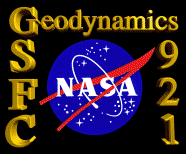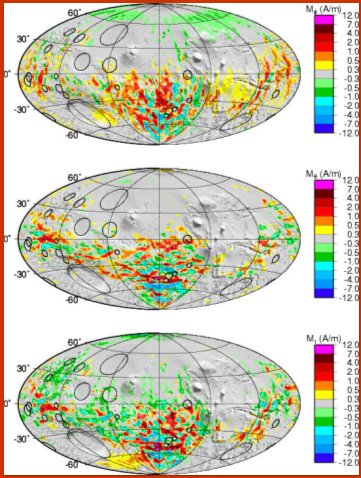


|
Magnetization components, assuming a 40 km thick layer at 20 km depth, shown with impact craters with diameter larger than 300 km. |
Contact: Benoit Langlais, GSFC, Code 921 (langlais@ltpmail.gsfc.nasa.gov)
![]()
![]() Back to Geodynamics Science Highlights
Back to Geodynamics Science Highlights
Responsible NASA official: Dr. Herbert Frey